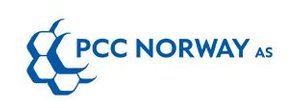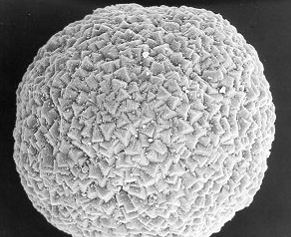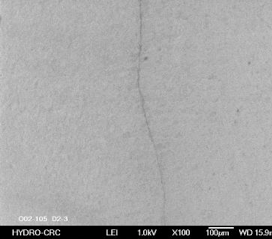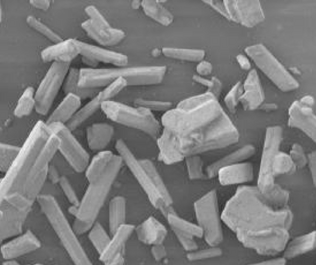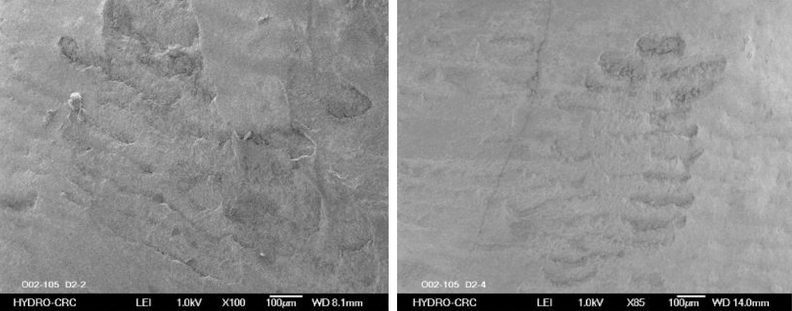PEARL PROPHYLAXIS POWDER
A sphere is a perfect structure.
No other shape has the same number of contact points all the same
distance away from the centre.
PCC Powder Quality
The particle size distribution, the free-flow properties, the low humidity uptake, the low clogging and the long shelf life are crucial quality parameters for the users, further improving ease of operation and reducing costs using calcium prophylaxis powder.
Patient Acceptance
Faster air polishing
Optimized cleaning performance
Biofilm and easy discolor removal
No salty taste from sodium
Insignificant bleeding
Gentle in the buccal cavity
PCC Powder
The spheres roll over the tooth with an infinite number of contact points, the spherical form smoothly removes and cleans residues and stain from the surface and with a high clean-between effect.
Other powders
Sharp edged particles
"Within the strict parameters of this experiment, the utilisation of commercial products demonstrated the possibility of erosion marks on the dental surface"
PCC Powder leaves no erosion marks
"In identical experimental conditions, PCC powder don´t seem to create the same erosion marks".
Hardness of PCC powder is 2,8 on Mohs scale.
Copyrights
PCC Norway AS
Risk Analysis
Prophylaxis use of Calcium Carbonate with spray-dispensing apparatus
Clinical trials conducted over a period of 18 months under the direction of a Dentist and two dental hygienists demonstrated the qualities of calcium carbonate in the removal of dental plaque, stains, and tartar in a comfortable and painless way for the patient yet simple and efficient for the Dentist and dental hygienists.
The absence of abrasion or erosion on the dentin and enamel surface as well as the absence of lesions on the periodontal tissues when compared to products already on the market, make calcium carbonate a viable product.
However, there are a number of application parameters to be respected.
1°. The air pressure must not exceed 3 Bars while operating the spray-dispensing machine.
2°. A low water pressure, not exceeding half of air pressure, must be maintained while operating the spray-dispensing machine.
The function of water in the spray application is to rinse the treated surface. Air is the only support for the calcium carbonate. Moreover, a high pressure water/air spray, without the addition of calcium carbonate can provoke lesions of the soft tissues.
3°. The use of an aspiration canula of adequate size is imperative.
Adequate aspiration prevents the dispersion of spray into the nasal cavities, the eyes, and onto the facial skin surface and thus, assures the comfort of the patient. This aspiration also prevents any eventual ingestion of the calcium carbonate powder. With this in mind, we developed an aspiration canula, which provides excellent protection of the patient. If, however, a small quantity, not in excess of 5 grams of calcium carbonate is ingested, the patient must wash out his mouth and drink water.
4°. It is recommended to use simple protective laboratory glasses during the procedure.
Traces of calcium carbonate could accumulate on the surface of the cornea during a dental hygiene treatment; while not being dangerous, this can lead to a slight irritation. If an important quantity of calcium carbonate comes in contact with the eyes, they must be rinsed with running water for a minimum of 15 minutes.
This product must not come in contact with any solvents, vapours or traces of mercury. Any contamination of calcium carbonate with these products may provoke a denaturisation and a possible augmentation of toxicity.
Periodontal tissues and treatment with
Calcium Carbonate
Scientific Study
Clinical and Biological Study
and Histological evaluation of the PCC PROPHY Pearls powder prophylaxis powder
Clinical study of the use of the PCC PROPHY Pearls prophylaxis powder using spray-dispensing apparatus to remove stain, plaque and tartar.
In this study the plaque, the stain and the tartar removal capacities have been investigated, in patients with a healthy and inflamed gingival, over a period of one year.
The influence of the cleaning powder (Calcium Carbonate) on the gingival tissues has been in particular studied on six males subjects, measuring biological parameters of the gingival and the gingival fluid.
The measurement was taken before treatment, right after treatment and 48 hours after treatment.
The clinical results show that the plaque, stain and tartar are removed easily and significantly, without any visible damage during and after the treatment. Neither we cannot observe any damage to the enamel and denting on electron microscopic pictures.
All patients show no bleeding, no tumefaction or significant sign of irritation of the gum.
The PH value of gingival fluid before treatment is acid, right after treatment is basic and neutral 48 hours after. This demonstrates the healing effect of the application of calcium Carbonate.
This was also attested by the periodontal probe measurment.
Also the observation indicated that the Calcium Carbonate act as scaffold for bone formation and provided histocompatible healing of periodontal tissues in this kind of therapy.
